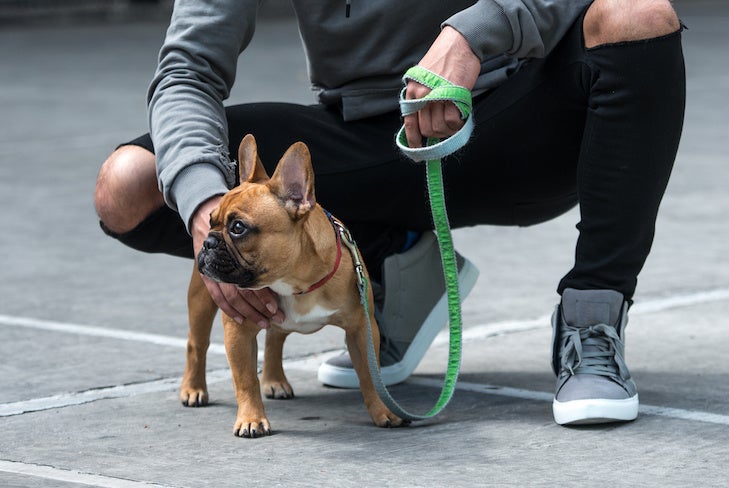Why Does My Puppy Growl at Strangers? – American Kennel Club - American Kennel Club
Puppies are known for being wiggly, cuddly bundles of love. They adore everybody, right? Wrong. Some puppies are friendly to everyone they meet, but others are uncomfortable around strangers and may even growl at them. But what does the growling mean? Is it aggression or is there something else going on? Grumbling at strangers is a sign that something is wrong, and the most likely explanation is the puppy is fearful of people they don't know.
Dogs Growl to Communicate
Growling seems like an aggressive act. After all, it usually precedes a bite. But, at its core, growling is about communication. Dogs growl to indicate they're unhappy, uncomfortable, or even fearful about a particular situation. For example, if another dog comes too close, your dog might growl to say, "Back off, you're intruding in my personal space." The point is to get the other dog to move before things escalate.
Because growling is a warning, it gives you time to change the situation before your dog feels the need to take further action. But it's also an indication of your puppy's unpleasant emotional state and tells you your puppy needs help. It's important to intervene and reassure them that everything is okay.

*Dog friendly rental filter applied to results
Never Punish Growling
So growling isn't really the problem; it's a symptom of your puppy's discomfort. Your job as an owner is to prevent those uneasy situations through training, socialization, and management. If growling does occur, punishing it is counterproductive. The last thing you want is a dog that bites without warning. If you punish your puppy's growls, you might prevent them from growling in the future, but you will have done nothing to change the underlying emotional issue.
For example, if your puppy growls whenever small children are near, you know they make your pup uncomfortable. If you punish the growling, your puppy may learn to stay silent in the presence of kids. But now, on top of already disliking them, your puppy will also associate them with punishment, making the discomfort even worse. And you will no longer have the growling as an early warning signal that your dog has had enough.
Socialize Your Puppy to Strangers
The best way to prevent your puppy from growling at strangers is to socialize your puppy to all kinds of people. That means different sizes, ages, ethnicities, etc. It also means people who look different such as people wearing hats or glasses or people using wheelchairs or canes. The point is for your puppy to see every type of person as a friend.
However, socialization is not as simple as having everybody you meet pat your pup. In fact, that can have the opposite effect for a nervous or uncertain dog. When done correctly, socialization allows the puppy to set the pace. Your puppy should do the approaching and only as quickly as they feel comfortable.
Pair every new encounter with a stranger with something wonderful such as a delicious dog treat or a special toy. The point is for your puppy to associate new people with fabulous things, so when they see a stranger, they hope for a reward rather than feeling uncertain or scared. In time, your puppy will look forward to meeting new people no matter who they are or how they look or act.

Desensitize and Counter-Condition Your Puppy to Strangers
If your puppy is already growling at strangers, you still need to socialize but in an even more cautious manner. One wrong move can set you back considerably. The goal is to change your puppy's associations with strangers from negative to positive using desensitization (gradually exposing your puppy to the things that bother them) and counter-conditioning (changing your puppy's emotional response).
Start with your puppy calm and relaxed. That might be 20 feet from a stranger for one puppy or two feet away for another. Then pair the presence of the stranger with something great like your puppy's favorite reward. Once your puppy begins to expect the treat when they notice the stranger, move a little bit closer and again offer rewards. As long as your puppy remains comfortable and anticipates the treat, you can continue to move closer and closer. Any time your puppy growls or shows other signs of discomfort you've moved too far too fast and should take a few steps back in your training program.
A sample training program might look like this:
- Reward your puppy 2 feet away from the stranger.
- Reward your puppy 1 foot away from the stranger.
- Reward your puppy beside the stranger.
- Have the stranger toss a treat to your puppy from two feet away.
- Have the stranger toss a treat to your puppy from one foot away.
- Allow your puppy to approach the stranger to take the treat from the ground at their feet.
- Allow your puppy to approach the stranger to take the treat from their hand.
- Have the stranger feed the treat then gently stroke your puppy's chest.
- Have the stranger gently stroke your puppy's chest then feed the treat.
- Have the stranger increase the amount of contact before feeding the treat.
Whenever your puppy is interacting with someone, be sure to instruct the person how to properly approach. Don't allow them to loom over your puppy or stare into their eyes as those are threatening behaviors that may increase your pup's discomfort. Instead, have the person kneel down and turn sideways, holding out their fist for the puppy to smell.
If your puppy's growling is still a problem, or you need help with your training program, be sure to consult a dog trainer or animal behaviorist. In no time, instead of growling at strangers, your puppy will be approaching them with enthusiasm.



Comments
Post a Comment